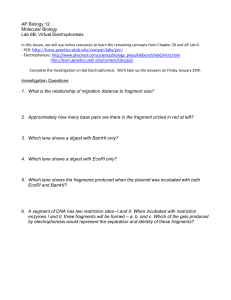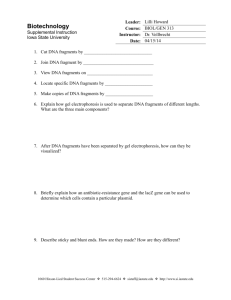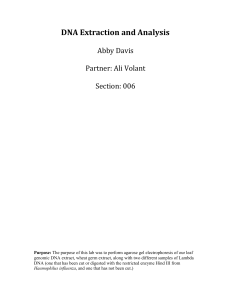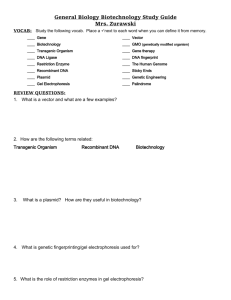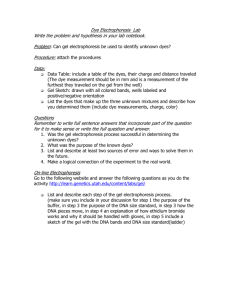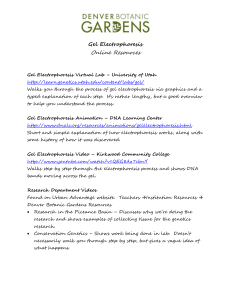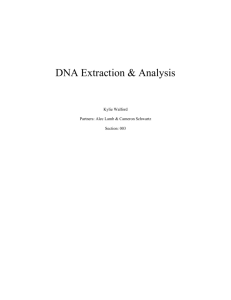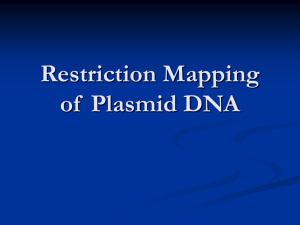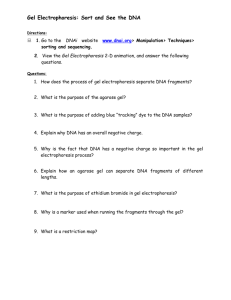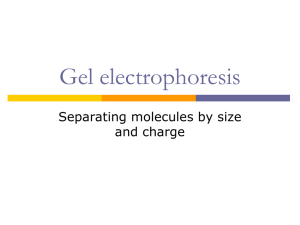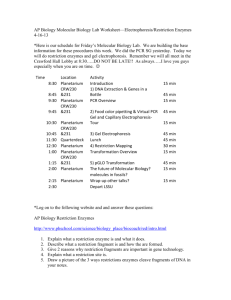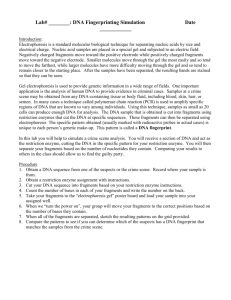Exercise 6B: Restriction Enzyme Cleavage of DNA and
advertisement
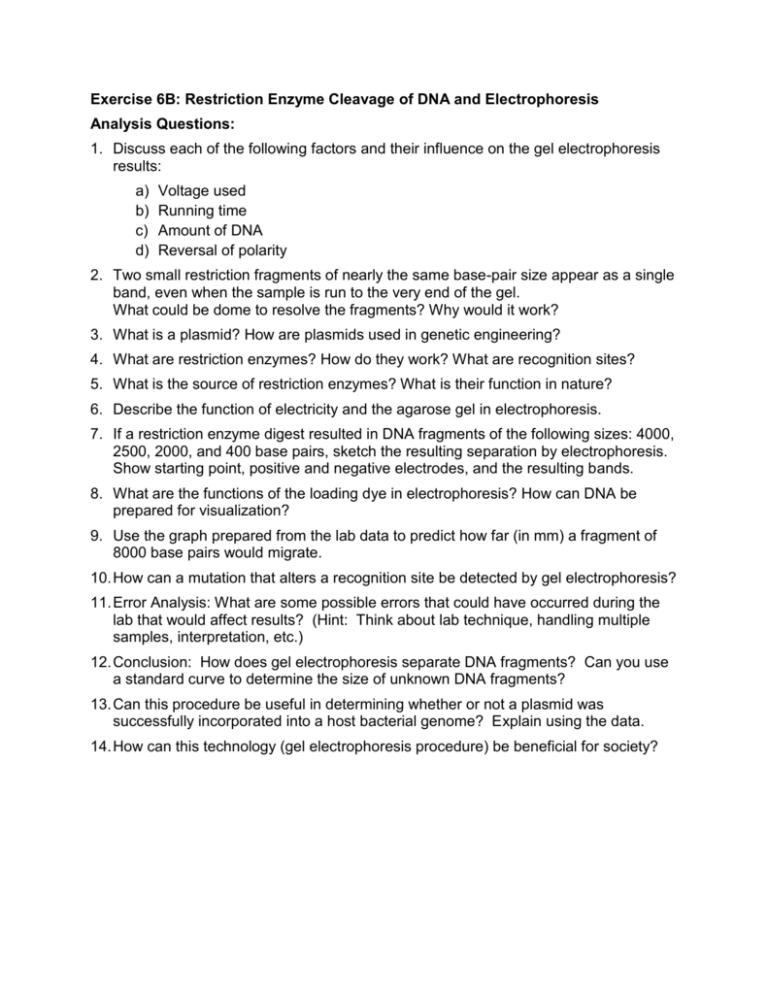
Exercise 6B: Restriction Enzyme Cleavage of DNA and Electrophoresis Analysis Questions: 1. Discuss each of the following factors and their influence on the gel electrophoresis results: a) b) c) d) Voltage used Running time Amount of DNA Reversal of polarity 2. Two small restriction fragments of nearly the same base-pair size appear as a single band, even when the sample is run to the very end of the gel. What could be dome to resolve the fragments? Why would it work? 3. What is a plasmid? How are plasmids used in genetic engineering? 4. What are restriction enzymes? How do they work? What are recognition sites? 5. What is the source of restriction enzymes? What is their function in nature? 6. Describe the function of electricity and the agarose gel in electrophoresis. 7. If a restriction enzyme digest resulted in DNA fragments of the following sizes: 4000, 2500, 2000, and 400 base pairs, sketch the resulting separation by electrophoresis. Show starting point, positive and negative electrodes, and the resulting bands. 8. What are the functions of the loading dye in electrophoresis? How can DNA be prepared for visualization? 9. Use the graph prepared from the lab data to predict how far (in mm) a fragment of 8000 base pairs would migrate. 10. How can a mutation that alters a recognition site be detected by gel electrophoresis? 11. Error Analysis: What are some possible errors that could have occurred during the lab that would affect results? (Hint: Think about lab technique, handling multiple samples, interpretation, etc.) 12. Conclusion: How does gel electrophoresis separate DNA fragments? Can you use a standard curve to determine the size of unknown DNA fragments? 13. Can this procedure be useful in determining whether or not a plasmid was successfully incorporated into a host bacterial genome? Explain using the data. 14. How can this technology (gel electrophoresis procedure) be beneficial for society?

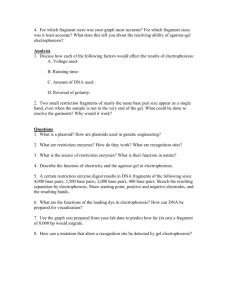


![Student Objectives [PA Standards]](http://s3.studylib.net/store/data/006630549_1-750e3ff6182968404793bd7a6bb8de86-300x300.png)
